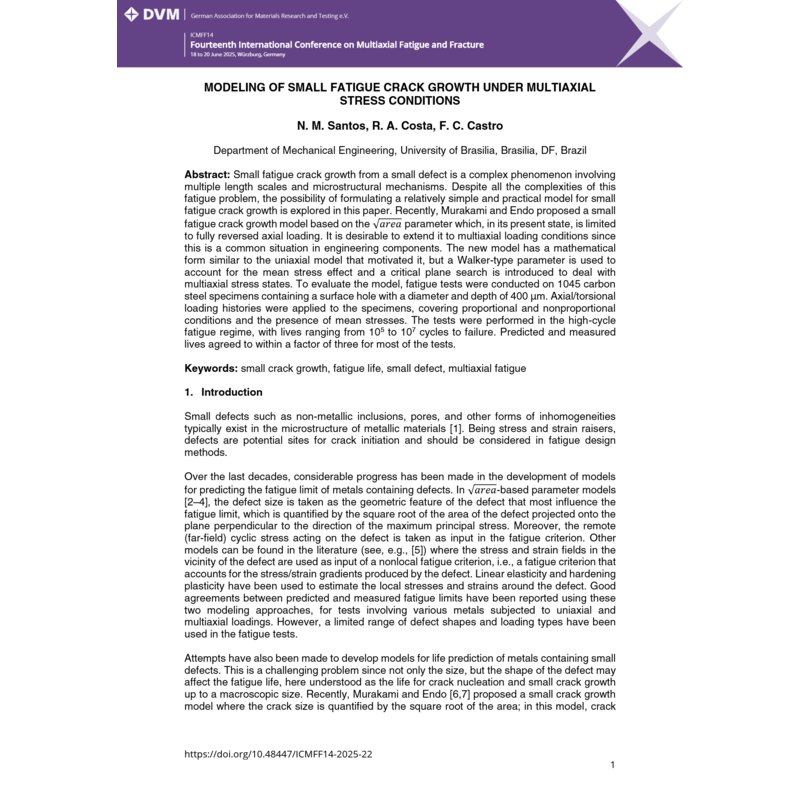- Online only



Since the 1980’s, the use of the √area parameter to quantify the size of a small fatigue crack has proved to be an effective engineering approach to predict the fatigue limit of metallic materials. In recent work, Murakami and Endo extended the application of the √area parameter for life prediction by introducing a new model for small fatigue crack growth. Despite the advance brought by this research, it is noteworthy that the model is restricted to small cracks subjected to axial stress cycling under fully reversed conditions.
The contribution of the present work lies in the extension of the Murakami–Endo model to small cracks whose growth is driven by the action of multiaxial stresses. The proposed model has the same mathematical form as the uniaxial model…

Datenschutzbedingungen (bearbeiten im Modul "Kundenvorteile")

Lieferbedingungen (bearbeiten im Modul "Kundenvorteile")

Rücksendebedingungen (bearbeiten im Modul "Kundenvorteile")
Since the 1980’s, the use of the √area parameter to quantify the size of a small fatigue crack has proved to be an effective engineering approach to predict the fatigue limit of metallic materials. In recent work, Murakami and Endo extended the application of the √area parameter for life prediction by introducing a new model for small fatigue crack growth. Despite the advance brought by this research, it is noteworthy that the model is restricted to small cracks subjected to axial stress cycling under fully reversed conditions.
The contribution of the present work lies in the extension of the Murakami–Endo model to small cracks whose growth is driven by the action of multiaxial stresses. The proposed model has the same mathematical form as the uniaxial model that motivated it, but a Walker-type fatigue parameter is used to account for the mean stress effect and the critical plane concept is introduced to deal with multiaxial stress conditions.
To evaluate the proposed model, fatigue tests were conducted on solid cylindrical specimens of 1045 carbon steel containing a surface hole with a diameter and depth of 400 micrometers. Axial/torsional loading histories were applied to the specimens, covering proportional and nonproportional conditions and the presence of mean stresses. The tests were performed in the high-cycle fatigue regime, with lives ranging from 105 to 107 cycles to failure.
Measured and predicted lives were within a factor of three. Considering the inherent scatter of fatigue lives, the predicted lives are acceptable for engineering calculation and indicate that the model is a promising fatigue analysis tool. The present work also shows that life predictions of the tests involving mean stress are improved when a Walker-type fatigue parameter is used instead of the Smith–Watson–Topper parameter.